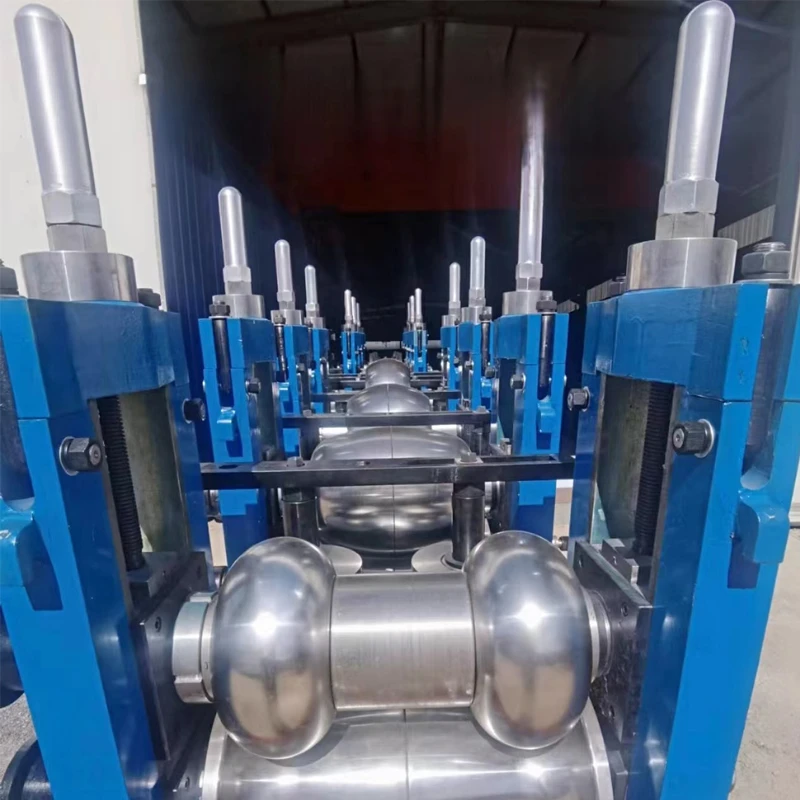Understanding the Advantages of Butt Fusion Equipment in Modern Pipeline Installation
Understanding Butt Fusion Equipment for Piping Systems
Butt fusion is a widely used method for joining thermoplastic pipes and fittings, especially in the water supply and gas distribution industries. This technique utilizes heat to melt the ends of the materials before they are fused together under controlled pressure. One of the critical components of this process is butt fusion equipment, which comes in various types to accommodate different pipe sizes and specifications. This article will explore the fundamentals, applications, and advantages of butt fusion equipment.
*What is Butt Fusion?*
Butt fusion involves aligning two pieces of thermoplastic pipe, such as polyethylene (PE) or polypropylene (PP), in a specially designed machine that applies heat to the ends of the pipes. The equipment typically consists of a heating mirror, a machine frame, hydraulic clamps, and a cooling system. Once the pipe ends reach the melting point, they are pressed together to create a strong, homogeneous bond. This method is favored for its ability to produce robust joints that can withstand high pressures and temperatures.
*Types of Butt Fusion Equipment*
There are several types of butt fusion machines available on the market, each designed for specific applications and pipe sizes
1. Manual Butt Fusion Machines These are generally used for smaller diameter pipes and require manual operation by skilled technicians. They are cost-effective and suitable for small projects or repairs.
2. Semi-Automatic Butt Fusion Machines These machines offer a balance between manual and fully automated systems. They often feature automated heating and cooling cycles while still requiring operator input for pipe alignment and connection.
3. Fully Automatic Butt Fusion Machines Designed for large-scale operations, these machines can handle a wide range of pipe sizes and materials. They offer advanced features, including programmable controls, reducing the risks of human error and improving efficiency.
4. Mini Butt Fusion Machines These compact machines are specifically designed for small diameter pipes, making them ideal for tight working spaces or smaller-scale applications.
*Applications of Butt Fusion Equipment*
Butt fusion equipment is primarily used in sectors that rely on thermoplastic piping systems, including
butt fusion equipment

- Water Supply Systems Ensuring that clean drinking water is delivered efficiently and safely requires durable and leak-proof joints that butt fusion can provide.
- Gas Distribution Networks The natural gas industry extensively uses butt fusion techniques to create secure joints that prevent leaks and ensure safe transport.
- Industrial Applications In various industries, including chemical processing, food and beverage, and pharmaceuticals, butt-fused pipes ensure reliable fluid transport.
- Waste Management Butt fusion is also utilized in wastewater treatment facilities to create durable connections that withstand harsh chemicals and pressures.
*Advantages of Butt Fusion Equipment*
1. Strength and Durability The joints created by butt fusion are as strong as the pipe material itself, providing long-term reliability.
2. Leak Resistance The absence of fittings and other joint types reduces the potential for leaks, significantly increasing the system's overall integrity.
3. Reduced Installation Time Automated butt fusion machines can significantly speed up the installation process, reducing labor costs and project timelines.
4. Versatility The ability to fuse various sizes and types of thermoplastic materials makes butt fusion a flexible solution for multiple applications.
5. Cost-Effectiveness While the upfront investment in butt fusion equipment may be higher compared to other joining methods, the long-term savings in maintenance and repairs can be substantial.
*Conclusion*
Butt fusion equipment plays a vital role in modern piping systems, providing robust, durable, and leak-free joints for various applications. As industries continue to prioritize efficiency and reliability, the demand for advanced butt fusion equipment is expected to grow. Understanding the different types and applications of this technology is essential for professionals in the field, ensuring that they make informed decisions that lead to sustainable and efficient infrastructure development. Whether for water supply, gas distribution, or industrial services, butt fusion remains a preferred method for assembling thermoplastic piping systems.
-
High Frequency Straight Seam Welded Pipe Production Line-BzZhou Xinghua Machinery Equipment Manufacturing Co., LTD.|Precision Welding, High EfficiencyNewsJul.30,2025
-
High Frequency Straight Seam Welded Pipe Production Line|BzZhou Xinghua|Precision Welding&EfficiencyNewsJul.30,2025
-
High Frequency Straight Seam Welded Pipe Production Line - BzZhou Xinghua|Precision Engineering&EfficiencyNewsJul.30,2025
-
High-Frequency Straight Seam Welded Pipe Production Line-BzZhou Xinghua Machinery Equipment Manufacturing Co., LTD.NewsJul.30,2025
-
High-Frequency Straight Seam Welded Pipe Production Line-BzZhou Xinghua Machinery Equipment Manufacturing Co., LTD.|Precision Manufacturing, High EfficiencyNewsJul.30,2025
-
High Frequency Straight Seam Welded Pipe Production Line-BzZhou Xinghua Machinery Equipment Manufacturing Co., LTD.|Precision Steel Pipe Manufacturing&Industrial EfficiencyNewsJul.29,2025


